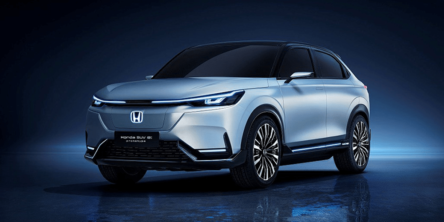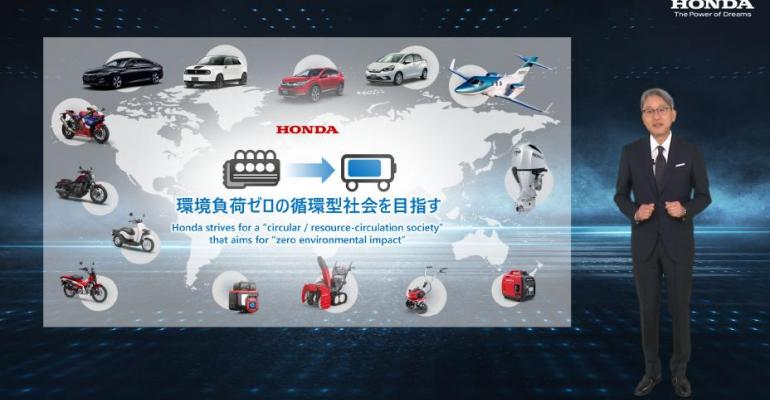After years of hesitation, Honda is shifting its business model to embrace electrification, spending ¥5 trillion or roughly $40 billion over the next decade to push ahead with the company’s transformation.
The goal is to shift the focus of Honda’s business portfolio from sales of only “non-recurring” hardware to selling various services of value to its customers after the sale. Included are products that combine hardware and software.
Honda also plans to launch 30 electric vehicles globally by 2030 and develop the capacity to build more than 2 million EVs annually.
In North America in 2024, as it recently announced, Honda plans to introduce two midsize-to-large EV models currently being developed jointly with General Motors for the Honda and Acura brands.
In 2026, Honda will begin adopting Honda e:Architecture, which will combine hardware and software platforms. Also, through the alliance with GM, Honda plans to introduce affordable EVs in 2027, with pricing and range meant to be as competitive as gasoline-powered vehicles, starting from North America.
In Japan, Honda will first introduce a commercial-use mini-EV model in the ¥1 million ($8,000) range, which will be followed by the launch of personal use mini-EVs and electric utility vehicles, the company says. In China, Honda will introduce a total of 10 new EV models by 2027 and expects to build dedicated EV plants in Guangzhou and Wuhan.
Honda executives note the key challenge in the EV era is the global procurement of batteries. The company plans to form partnerships to ensure stable procurement of liquid lithium-ion batteries in each region.

Honda E prototype SUV unveiled in 2021.
In North America, Honda will procure Ultium batteries from GM. However, Honda is exploring the possibility of creating a joint venture company for battery production that is separate from GM.
In China, Honda will further strengthen its collaboration with CATL. In Japan the company plans to procure batteries for mini-EVs from Envision.
Honda aims to introduce its next-generation batteries to the market in the second half of the 2020s and will accelerate its independent R&D of the all-solid-state batteries it currently has under development.
As part of the plan, Honda will build a demonstration line for the production of all-solid-state batteries with an investment of approximately ¥43 billion ($343 million) with a goal to start demonstration production in spring 2024.
Over the next 10 years, Honda will allocate about ¥5 trillion for electrification and software technologies, including both R&D expenses and separate investments. Honda's overall R&D expenses budgeted for this period will be ¥8 trillion ($64 billion), according to Honda executives.
The shift in the company’s strategy will require changes in the company’s organization as well, the executives note.
In the past, Honda divided its organization by products, namely motorcycle, automobile and power products.
Starting this fiscal year, the technologies which will become the core of Honda’s future competitiveness have moved from product-based organizations and combined under the newly created Business Development Operations, which covers electrified products and services, batteries and energy, hydrogen, and software/connected technologies that connect to core areas.
In addition, the company says, “We aim to realize carbon neutrality for all products and corporate activities Honda is involved in by 2050, striving to eliminate carbon emissions from power sources of a wide variety of products.”





